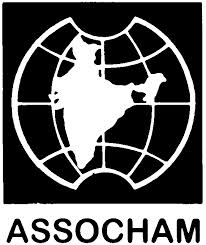 In the absence of quality higher education and none of the IITs making to world’s top research institutions, Indian students spend USD 6-7 billion (approx. Rs 45,000 crore) annually in seeking greener pastures in foreign universities with a miniscule number of them choosing to return home, said an ASSOCHAM-Tata Institute of Social Sciences (TISS) joint study on ‘Realigning Skilling towards Make in India’.
In the absence of quality higher education and none of the IITs making to world’s top research institutions, Indian students spend USD 6-7 billion (approx. Rs 45,000 crore) annually in seeking greener pastures in foreign universities with a miniscule number of them choosing to return home, said an ASSOCHAM-Tata Institute of Social Sciences (TISS) joint study on ‘Realigning Skilling towards Make in India’.
“Indians spend about USD 6-7 billion everyyear in sending their children abroad for higher education. It is not just the elite who spend generously on a good education and credentials but the middle class families also spend their life time savings to educating their children abroad”, the study noted with concern.
While the much touted IITs have an annual enrolment of 10,000-15,000, focused only the brightest of the bright, not a single great worldwide patent has emerged, nor have they produced a single Nobel Laureate. This is despite the government pouring thousands of millions of rupees into their establishment and upkeep.
It said India is amongst the worst for rankings in patents and for new start-ups in technology and innovation. “We still do not have a single equivalent of a Google, Facebook, Microsoft or Walmart or a Nike”. Even a small country like Italy or Finland does better!
While most of the IITians choose to go abroad for research, they do not return home after obtaining their doctoral programmes.
Another reason for low commitment and resources for the research in the institutions of higher learning is that 90 percent of the state and central funding goes into payment of salaries and overhead costs and building of new physical infrastructure. This leaves almost no money for research and innovation, the ASSOCHAM study said.
There is a problem of political interference. “Political interference and using universities as hubs for political activities only compounds the problems. Outdated curriculums, teachers and student unions ensure that status quo is preserved”.
It said UGC and AICTE and other such councils have virtually had an archival stranglehold over policy and have stifled any possible innovation and new ways of thinking. “Our education system is just living in ancient history even in subjects like sciences and engineering”, adds the ASSOCHAM- TISS study.
The paper suggested setting up of a National Higher Education Commission (NHEC), an independent regulator on the lines of SEBI or CVC (Central Vigilance Commission). The proposed NHEC must ensure mandatory quality rating of all universities and institutions of higher learning, be they government, state, autonomous or private.
The proposed body must also create under it a think tank of enlightened persons from different walks even from those with rural background to assess the need, demand and changing technology for use in education.
The ASSOCHAM paper also suggested stopping direct funding of central and state universities which should be allowed to charge rational fees to cover their costs and provide funds for research and development.
“Though Indian higher education system is the largest in the world in terms of institutions and third largest in terms of enrolment, we lack in innovation and making our youth employable”, ASSOCHAM Secretary General Mr D S Rawat said while releasing the paper.
Experience of world’s top institutions like the MIT should be used for promoting successful entrepreneurs while skilling should be made part of the university education. Also skilling should be delinked from labour and be mainstreamed into education.
Government’s spending must be refocused on higher education directly towards the needy students among the SC/ST, minorities and OBCs and other under-privileged sections. “For all other aspiring students provide a sovereign guarantee to assess a bank loan without collateral…” the paper said.
